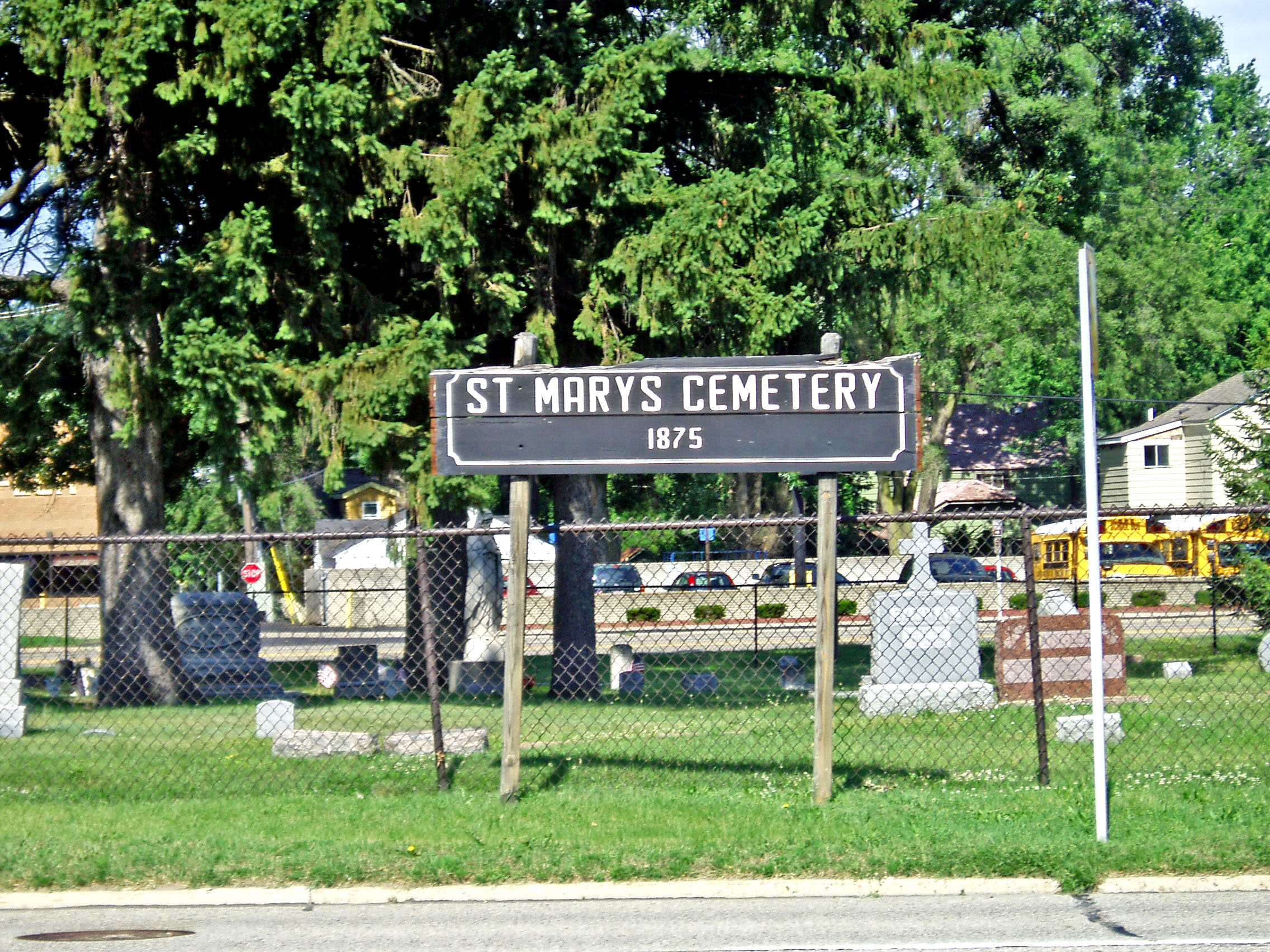

In 1826, Daniel Burrows who owned property in this area gave 6 acres for use as a public burial ground to serve the local population. In 1857, the Royal Oak Township Board of Health took control of that cemetery. Royal Oak Township continues to administer the property. At some point, the cemetery’s acreage grew to 9.75.
A Catholic population lived in this area. As early as 1842, Catholics were regularly meeting in the home of Edmund Lockman, and by 1851, a chapel had been built. I believe that a parish was established in 1866 and became the present-day St. Mary’s Parish that continues to serve residents of Royal Oak. Some Catholics prefer to have their loved ones interred in land that has been blessed by a Bishop and religiously dedicated for use as a cemetery. In 1875, the Royal Oak Township officials sold two acres of the Royal Oak Township Cemetery to the Catholic Society of St. Mary’s Parish for use as a Catholic burial ground. The land was blessed by Detroit Bishop Casper Henry Borgess in 1875 and has served as a cemetery since then. This cemetery continues to be owned by St. Mary’s Parish and its northern boundary is the southern boundary of Royal Oak Township Cemetery.
Casper Henry Borgess was the second Roman Catholic bishop in Detroit. There is a long story about that. Let me keep it brief. Catholic influence has been very apparent in Detroit since Antoine Cadillac arrived in the summer of 1701. Two priests accompanied him to Detroit on the long journey from Montréal and St. Anne du Detroit parish has been in continuous operation since July, 1701. In the early years, Catholic religious matters in Detroit were administered from France and then from Montréal. When the British took over in 1760, they did not interfere very much with the way the Catholic Church operated. Indeed, they prevented French people from migrating to the former French colonies in North America but they permitted French clerics and nuns to come from France to minister to the French population.
After the United States took control of Detroit in 1796, the Catholic religious matters were administered by the Bishop of Baltimore. Indeed, that is where Father Gabriel Richard had arrived when he escaped from France during the Revolution. So after Richard came to Detroit, he reported to the Bishop in Baltimore. After the population along the Ohio River grew and transportation improved, Cincinnati became a large city, the largest west of the Alleghenies. Administration of Roman Catholic matters in Detroit was transferred to the Bishop of Cincinnati.
In 1833, administrators in Cincinnati with approval, I assume, from the bureaucrats in Rome, established a diocese in Detroit. Frederick Rese was appointed as bishop. He was born in Germany but immigrated to Cincinnati. Later, he returned to Europe and spent almost three years—1829 to 1831—encouraging people from Austria, Belgium and other western European areas to immigrate to the United States. I do not know his motivation, but he may have wished to encourage the growth of the Roman Catholic population of the Midwest. He returned to the United States and, in 1833, was appointed by the Holy See, as the first bishop of a diocese headquartered in a Catholic Church in this country. I believe that he was the first German-born individual to become a bishop of the Catholic Church in North America. So far so good. But just four years later he began his work in Detroit, he started to suffer from dementia. No longer able to carry out his duties, he was ordered to return to Rome and then was institutionalized in Hildesheim in his native country. However, he did not resign his job as Bishop of the Detroit diocese.
Casper Henry Borgess was born in Kloppenburg, Hanover Germany on August 1, 1824 but came to the United States as a youngster. He grew up here, I believe in Cincinnati where very many Germans settled. He completed his undergraduate education in the classics at St. Xavier College in that city, now known as Xavier University/. He studied theology at St. Charles Seminary in Philadelphia and was ordained as a priest in 1847. He served a parish in Columbus, Ohio and worked in Cincinnati, rising to the rank as rector of the Cathedral there in 1859. Finally, in 1870, administrators in Cincinnati realized that something should be done about the administration of the Detroit Roman Catholic diocese. Borgess was appointed administrator and acting bishop in Detroit in 1870. One year later, Frederick Rese died in Germany and Borgess was confirmed as the second bishop of the Roman Catholic diocese of Detroit. Seventeen years later he retired and selected Kalamazoo as his place of residence. He died there in 1891. One of the largest medical facilities in that city is named in his honor—The Borgess Medical Complex.
Established: 1875
State of Michigan Registry of Historic Sites” P257, Listed April 18,
1996
State of Michigan Historical Marker: Not yet put in place
Use in 2009: Cemetery
Photograph: Ren Farley; June 29, 2009
Description prepared: January, 2012